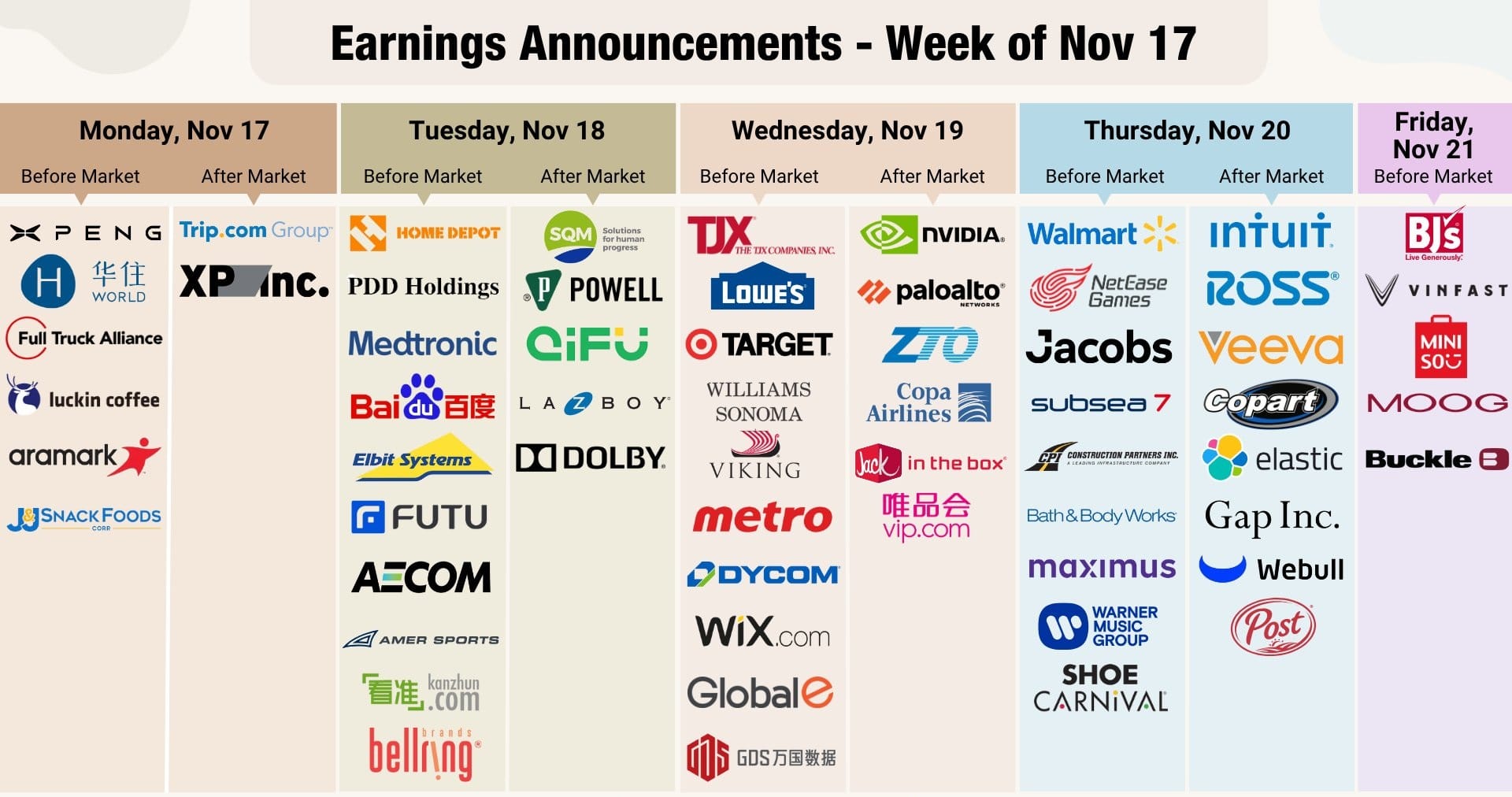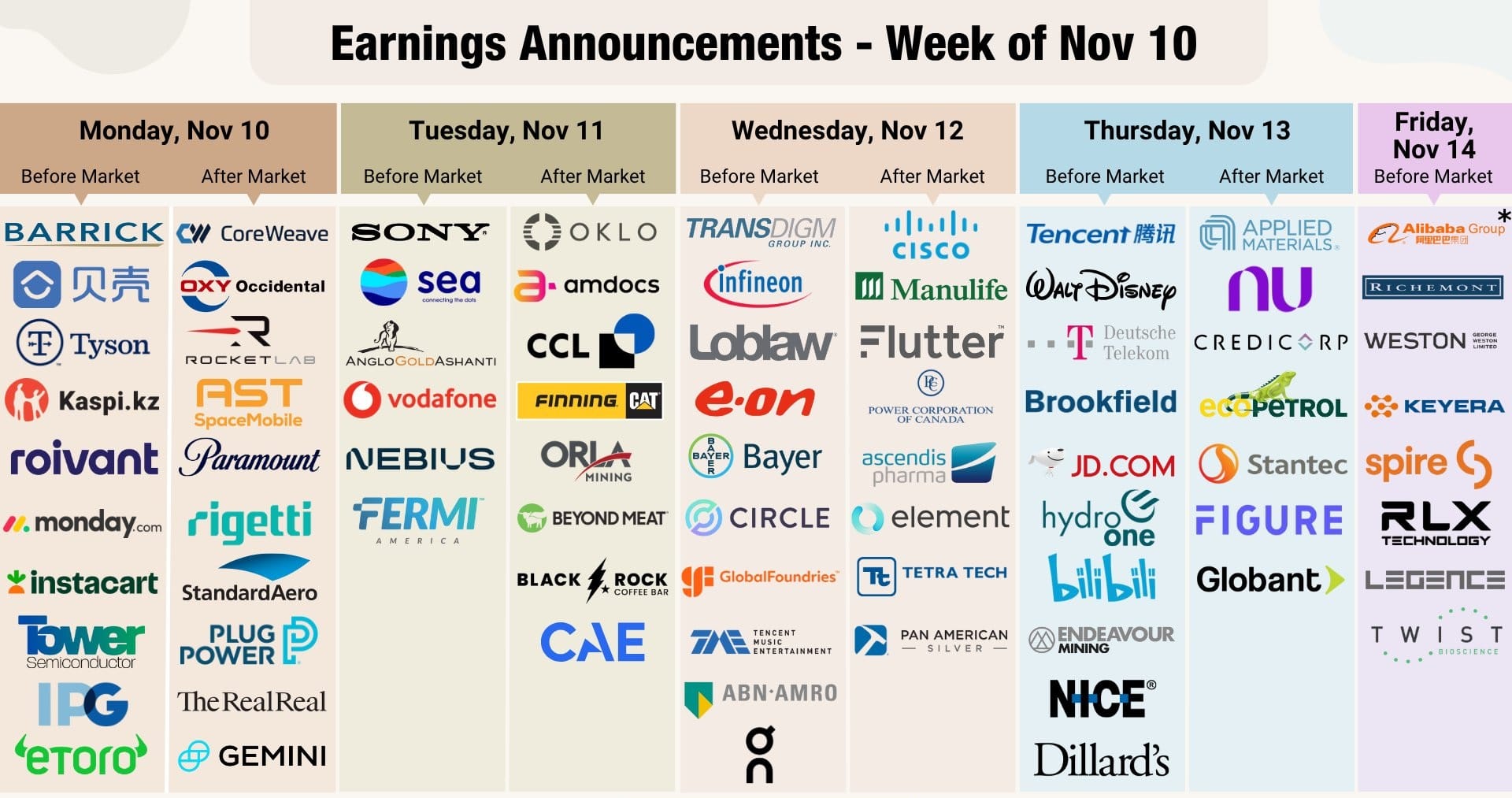The Nvidia earnings outlook stands at the center of one of the most pivotal weeks global markets have faced in years. A rare convergence of macroeconomic pressures, monetary-policy uncertainty, and AI-driven tech momentum forms the backdrop of what investors increasingly see as a defining moment for the year ahead. Across continents, central banks are preparing to release minutes, issue decisions, and publish data that will shape the trajectory of inflation, interest rates, and currency markets. At the same time, the world’s most important artificial-intelligence infrastructure company prepares to reveal results that could either reinforce or destabilize one of the most powerful investment narratives of the decade.
This is not simply a week filled with economic events; it is a turning point for multiple storylines that have shaped global markets for two years. Inflation is easing, but unevenly. Growth is slowing, but selectively. Policy divergence between central banks is widening. Meanwhile, the rapid acceleration of AI computing demand has created the fastest tech-investment cycle in history, with Nvidia’s earnings outlook serving as the barometer for the entire sector.
Together, these themes build toward a single question: Are we approaching a sustainable equilibrium where AI investment and monetary stabilization coexist—or is the market preparing for a dramatic repricing?
This article explores the narrative in depth, analyzing both sides of Nvidia’s investment case, evaluating central-bank dynamics, assessing global data, and breaking down the implications for the global economy and financial markets.
I. Nvidia: The Central Gravity of the AI Universe
The Nvidia earnings outlook has become more than a routine corporate update. It is a quarterly global event. The company’s influence extends far beyond the stock market, shaping cloud-computing strategies, national AI investment, semiconductor supply chains, and the pace of technological disruption across industries.
Never before has a single company been so central to the development of an entirely new economic architecture. Nvidia designs and supplies the advanced GPUs and compute systems—the “picks and shovels”—behind the AI boom. Its hardware underpins the training and deployment of large language models, autonomous vehicles, robotics, advanced simulation, and cloud-infrastructure modernization.
The Bullish Theses: Demand Without a Ceiling
Bullish analysts argue that Nvidia’s long-term trajectory remains extraordinarily strong due to several reinforcing structural trends:
1. Global AI Infrastructure Spending Is Exploding
Industries ranging from pharmaceuticals to energy now depend on AI models to improve productivity and reduce time-to-market. Governments are also racing to build sovereign AI capabilities. This broad-based demand supports Nvidia’s multi-year revenue visibility.
2. Jensen Huang Revealed a $500 Billion Order Book
Nvidia’s CEO recently surprised the market by disclosing that cumulative orders for its Blackwell and next-generation Rubin architectures exceed $500 billion through 2026. This figure stunned analysts and reframed expectations for the size of the AI computing market.
A $500B pipeline implies that global AI-infrastructure demand is still in its early innings.
3. Data Center Segment Dominance
Expected revenue breakdown for this quarter:
- Data Center: $48.3B
- Gaming: $4.41B
- Automotive: $621M
- Professional Visualization: $611M
The Nvidia earnings outlook relies almost entirely on the performance of the Data Center segment, which has grown into one of the most profitable business models in the world.
4. CUDA: A Moat No Competitor Can Match
CUDA, Nvidia’s proprietary software ecosystem, remains the industry standard for AI model development. Its lock-in effect is comparable to iOS or Windows in earlier computing eras.
Competitors may design chips, but they cannot replicate Nvidia’s software moat.
5. The Upgrade Cycle Is Accelerating
Each generation—Ampere → Hopper → Blackwell → Rubin—delivers exponential performance increases, turning data centers into perpetual Nvidia buyers.
Momentum investors describe this as “infinite-loop demand.”

II. The Bearish Theses: Fragility Behind the Hype
The other side of the Nvidia earnings outlook presents a far more cautious picture. Bears argue that the stock’s valuation requires near-perfect execution and flawless macroeconomic alignment—conditions that rarely persist indefinitely.
Key warnings include:
1. Michael Burry’s Massive Put Position
The legendary investor behind “The Big Short” has taken a significant position betting against Nvidia, purchasing more than one million put options. His track record forces the market to at least consider the possibility of a major correction.
2. SoftBank Has Exited Its Nvidia Stake Entirely
SoftBank, a technology-focused investment titan, reportedly sold its entire multi-billion-dollar position. They are known for exiting at major inflection points.
3. The China Risk Is Severe & Persistent
U.S. export controls prevent Nvidia from selling its most advanced AI chips to China. Nvidia has attempted to create compliant versions, but the geopolitical environment remains hostile.
CEO Jensen Huang’s recent comment that “China will win the AI race” startled U.S. policymakers and investors, deepening the narrative of geopolitical vulnerability.
4. The Law of Large Numbers
Nvidia’s market cap has reached levels where maintaining hyper-growth becomes mathematically difficult. The company must continue to exceed already-historic revenue levels quarter after quarter.
Any slowdown—even one quarter—could trigger a severe correction.
III. What the Market Will Watch in the Earnings Call
Three elements in the Nvidia earnings outlook dominate market expectations:
1. Forward Guidance
A beat is expected.
A strong forward guide is required.
Anything short of “spectacular” may be viewed as a miss.
2. Data Center Demand Sustainability
Analysts want visibility into hyperscaler spending (AWS, Microsoft, Google), enterprise AI adoption, and sovereign AI projects.
3. Geopolitical Commentary
Investors need clarity on China, supply chain resilience, export controls, and competitive threats.
If Jensen Huang can articulate a future that outweighs current geopolitical and valuation risks, the stock could extend its dominance. If not, the AI sector may experience its first major correction.

IV. The Monetary Backdrop: Central Banks Hold the Other Half of Market Power
While Nvidia commands attention, the world’s central banks provide the macroeconomic conditions that determine whether markets risk-on or risk-off.
This week features major updates from:
- Federal Reserve (FOMC Minutes)
- Bank of England (CPI Release)
- Reserve Bank of Australia (Minutes)
- Bank of Japan (CPI Release)
- People’s Bank of China (LPR Decision)
- Bank of Canada (CPI Release)
Each bank is at a different point in the monetary cycle, and the divergences matter enormously for global currencies, liquidity, and risk appetite.
V. The Federal Reserve: The Most Important Minutes of the Year
The Fed’s October meeting introduced a rare split within the committee. Two dissenters—one hawkish, one dovish—revealed fractures beneath the surface.
Chair Powell warned that another December rate cut is not assured.
Markets now price a 50% probability of a December cut, down from nearly 90% weeks earlier.
The Nvidia earnings outlook is deeply intertwined with Fed policy, because:
- AI investment is highly capital-intensive.
- Rate cuts reduce financing costs.
- High rates slow cloud-infrastructure spending.
The market will look for clarity on:
● Inflation vs. Growth Risks
How concerned is the Fed about persistent inflation vs. economic slowdown?
● The Neutral Rate Debate (r*)
If the Fed believes r* has risen, interest rates may remain higher for longer—bad for risk assets.
● Balance Sheet Normalization
Ending the runoff of securities on December 1st is an underappreciated but important liquidity support.
For Nvidia and tech stocks broadly, a hawkish Fed threatens liquidity-sensitive valuations.
VI. Bank of England: A Crossroads Defined by Inflation
The UK is at a critical juncture. Inflation has fallen, but not in the categories the BoE prioritizes—services and wages remain stubbornly elevated.
Governor Andrew Bailey’s tie-breaking vote in the last meeting underscored internal conflict.
Markets now expect an 85% chance of a December cut—but that depends entirely on this week’s CPI data.
A hot print would:
- strengthen the pound
- push gilt yields higher
- reduce risk appetite
- challenge global equity momentum
A soft print could ignite a risk-on rally across Europe.
VII. Reserve Bank of Australia: The Quiet Influencer
The RBA’s minutes may seem less dramatic, but they carry global implications.
The bank raised core inflation forecasts through mid-2026 and emphasized caution.
Their message: nothing is promised. No cuts. No hikes. Pure data dependence.
This adds to global monetary divergence—an important theme affecting currency volatility and equity flows.
VIII. Bank of Japan: The Sleeping Giant Wakes
Japan’s Core CPI is expected to hit 3.0%, well above the BoJ’s 2% target.
Pressure is mounting on Governor Ueda to end the world’s last remaining ultra-loose monetary policy regime.
A stronger CPI number could:
- trigger yen appreciation
- destabilize carry trades
- ripple across global risk assets
A BoJ shift could be one of the most disruptive macro events of the year.
IX. Global PMIs: The Fastest Read on Economic Momentum
Flash PMIs from the U.S., UK, and Eurozone will reveal:
- service-sector resilience
- manufacturing health
- pricing pressure trends
PMIs have recently shown surprising strength—contrary to soft industrial and retail data. If PMIs hold, markets may interpret it as a soft-landing signal.
X. Canada, China, Corporate Earnings: The Micro and Macro Unify
Bank of Canada & Canadian CPI
Inflation is expected to fall, but the BoC has hinted at a temporary rise in early 2026. No policy change is expected.
People’s Bank of China (LPR)
No movement expected, with the PBOC preferring targeted liquidity instead of sweeping rate cuts.
China’s deflationary and property-market weakness remains a risk for global growth.
Corporate Earnings Beyond Nvidia
Key companies reporting include:
- Walmart
- Home Depot
- Target
- Baidu
- Trip.com
- Palo Alto Networks
- Veeva Systems
Together, these firms provide insight into:
- U.S. consumer strength
- cybersecurity investment
- Chinese demand
- enterprise software spending
XI. Synthesis: How Nvidia and the Central Banks Intersect
The Nvidia earnings outlook and global monetary policy share an unexpected relationship:
If the Fed is hawkish, Nvidia must be extraordinary.
Otherwise, liquidity pressures and valuation compression could overpower even strong AI fundamentals.
If the Fed is dovish, Nvidia has far more upside potential.
AI spending accelerates when rates fall.
If central banks diverge too sharply, currency volatility rises, creating headwinds for multinational earnings—including Nvidia’s.
AI momentum vs. monetary gravity
This week decides which force is stronger.
XII. Strategic Implications for Investors
1. Watch Liquidity Indicators
Fed balance sheet shifts, money-market flows, and Treasury issuance all influence risk appetite.
2. Focus on Sovereign AI Spending Trends
Nations are racing to build sovereign AI capacity—Nvidia is at the center of this arms race.
3. Expect Volatility Around the Earnings Call
With expectations sky-high, even a small miss could trigger a large downside move.
4. Geopolitical Risk Premium
China remains Nvidia’s largest wildcard.
5. Prepare for Policy Surprises
A surprise from the BoJ or BoE could shake global markets more than expected.
XIII. Conclusion: A Week That Sets the Narrative for 2025
The Nvidia earnings outlook and this week’s global central-bank decisions are not isolated events—they are deeply interconnected signals shaping the trajectory of markets, technology, and the global economy.
This week delivers:
- a test of the AI investment cycle
- clarity on inflation dynamics
- confirmation (or rejection) of soft-landing hopes
- visibility into geopolitical risk
- a reset of market expectations
The world stands at a crossroads. Whether driven by monetary tightening, AI acceleration, geopolitical tension, or valuation constraints, the next phase of the global economic narrative begins here.
Investors who synthesize these forces—not in isolation, but as interdependent variables—will navigate the year ahead with far greater clarity.












